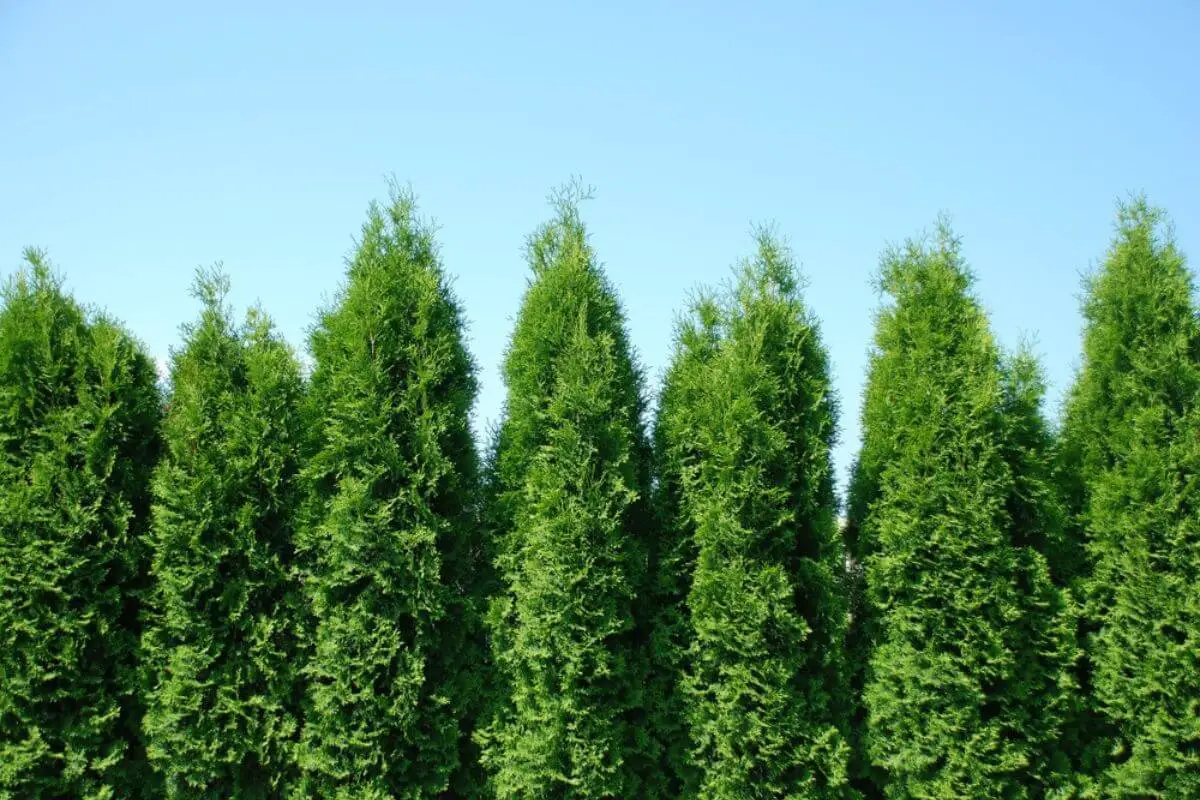Are you looking to add some privacy and beauty to your landscape? Two popular options you might consider are the Spring Grove Arborvitae and the Green Giant. These evergreen trees are known for their impressive size and ability to create a lush, green backdrop for your outdoor space. In this article, we’ll delve into the differences between Spring Grove Arborvitae and Green Giant, helping you make an informed decision for your landscaping needs.
1. Introduction
When it comes to landscaping, selecting the right trees is crucial. Spring Grove Arborvitae and Green Giant are two popular choices known for their ability to create privacy screens and enhance the aesthetic appeal of your property. Let’s explore their characteristics to determine which one suits your needs best.
2. Overview of Spring Grove Arborvitae
Spring Grove Arborvitae, scientifically known as Thuja plicata ‘Spring Grove,’ is a cultivar of Western Red Cedar. It features a distinctive pyramidal shape with dense, rich green foliage. This evergreen tree is prized for its versatility and elegant appearance.
3. Overview of Green Giant
Green Giant, scientifically referred to as Thuja standishii × plicata ‘Green Giant,’ is a hybrid of Japanese Arborvitae and Western Red Cedar. This tree lives up to its name, boasting an impressive size and vibrant green foliage that remains all year round.
4. Size and Growth Rate
Spring Grove Arborvitae typically reaches a height of 15 to 20 feet and spreads 5 to 6 feet wide. In contrast, Green Giant is a true giant, soaring to heights of 60 to 80 feet and spanning 12 to 20 feet in width. In terms of growth rate, Green Giant outpaces Spring Grove Arborvitae, making it an ideal choice if you’re seeking a rapid privacy solution.
5. Appearance and Foliage
Both trees exhibit lush green foliage that persists throughout the year, providing a reliable privacy screen. Spring Grove Arborvitae’s leaves are scale-like, while Green Giant’s foliage features a more fan-like, feathery appearance. The unique foliage of each tree adds character to your landscape.
6. Maintenance and Care
Spring Grove Arborvitae demands regular maintenance to maintain its shape and prevent browning. It prefers well-draining soil and requires adequate water, especially during dry spells. Green Giant, on the other hand, is relatively low-maintenance, requiring minimal pruning and displaying better resistance to browning.
7. Landscape Uses
Both trees serve as exceptional privacy screens, windbreaks, and ornamental focal points in a landscape. Spring Grove Arborvitae’s more modest size makes it suitable for smaller properties, while Green Giant’s towering stature works well on larger estates.
8. Planting and Growth Conditions
Spring Grove Arborvitae thrives in full sun to partial shade and adapts well to various soil types. It’s important to provide proper spacing to avoid overcrowding. Green Giant prefers full sun and well-draining soil and is more tolerant of urban conditions.
9. Disease Resistance
Both trees exhibit good disease resistance overall. However, Spring Grove Arborvitae may be susceptible to certain pests and diseases, such as spider mites and root rot, if not properly cared for. Green Giant tends to be hardier and less prone to such issues.
10. Environmental Impact
Due to its large size, Green Giant can contribute significantly to carbon sequestration and air quality improvement. Spring Grove Arborvitae, while smaller, still provides these ecological benefits, making both options environmentally friendly choices.
11. Cost Comparison
Green Giant typically comes with a higher upfront cost due to its larger size and faster growth rate. Spring Grove Arborvitae may be more budget-friendly initially but could require more ongoing maintenance.

12. Choosing the Right Tree for You
Selecting between Spring Grove Arborvitae and Green Giant depends on your specific needs and preferences. Consider factors such as available space, desired growth rate, maintenance capabilities, and budget. Both trees offer unique advantages that can enhance your landscape.
13. Conclusion
In the battle of Spring Grove Arborvitae vs Green Giant, there’s no clear winner – it ultimately depends on what you’re looking for in a privacy screen tree. Whether you opt for the more compact elegance of Spring Grove Arborvitae or the grandeur of Green Giant, you’re bound to enjoy the benefits of a lush, green landscape.
FAQs
Can I plant Spring Grove Arborvitae and Green Giant together for a varied landscape?
Yes, combining these trees can add visual interest and texture to your landscape.
Do these trees attract wildlife?
Both Spring Grove Arborvitae and Green Giant can attract birds and other wildlife, providing a natural habitat.
Is professional pruning necessary for Green Giant’s larger size?
While not strictly necessary, professional pruning can help maintain the tree’s shape and health.
Do these trees tolerate urban pollution?
Green Giant has better tolerance for urban conditions, making it a preferable choice for city environments.
Can I use the pruned branches for crafts and decorations?
Absolutely, the aromatic foliage of both trees is popular for crafting wreaths and other decorative items.



